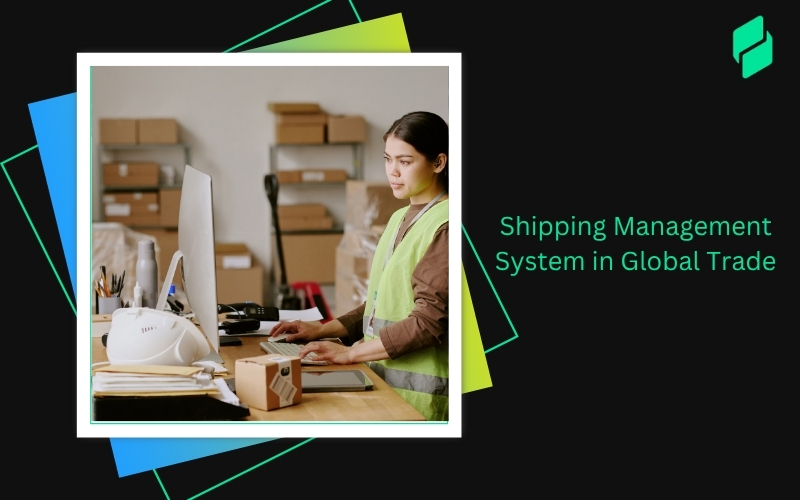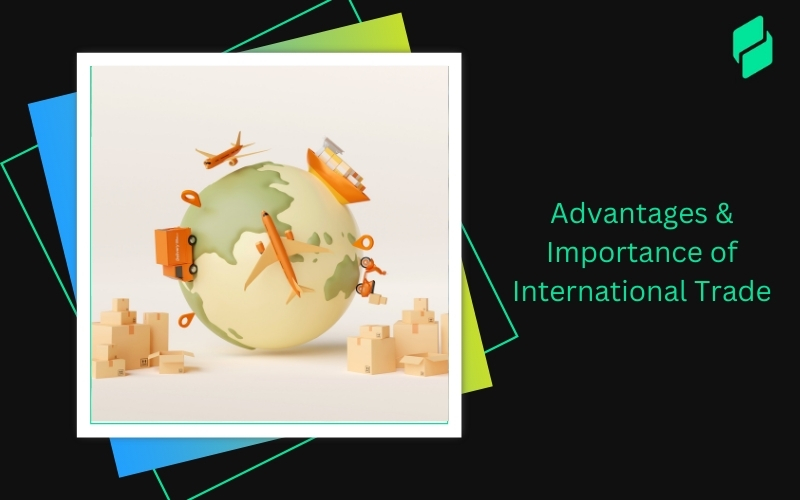Optimize your business: use unlimited savings with Pazago fulfilled now!
Get Started ->Did you know that every international shipment you receive or send starts its journey from a specific point that could dictate the entire flow of your business operations? This vital hub is known as the Port of Loading (POL) in shipping.
It's not just a point of departure, it's the linchpin in the massive wheel of global trade. Let’s explore why POL is important and how it significantly shapes the logistics and supply chain industries.
What is POL and Why Should You Care?
The POL in shipping—sounds technical, right? Simply put, it is the port where goods are loaded onto a shipping vessel. This is where the efficiency of your shipping begins. The choice of POL can affect everything from the cost of transportation to the delivery times of your goods.
Are you always looking to cut shipping costs and speed up delivery? Focusing on your choice of POL could be the answer.
A well-managed Port of Loading ensures that goods are loaded efficiently and handled carefully to prevent damage. This means reduced overhead costs and happier customers for businesses big and small.
Therefore, understanding the nuances of POL can help you optimize your shipping strategies and enhance your operational efficiency.
The Strategic Role of POL in Global Logistics

The importance of POL in global trade extends beyond the docks. It influences the routes your shipments take, the speed with which they travel, and the overall cost-effectiveness of the shipping process.
Did you know selecting a less congested POL could significantly decrease shipping delays? This strategic decision can make or break a business's supply chain.
Moreover, significant loading ports are not just transit points but vital economic zones impacting local and global economies. They support export and import cycles, fuel industries, and job creation.
Quick Read: Understanding What Are The Elements Of Logistics System?
Responsibilities at the Port of Loading (POL) in Shipping
Here, we will unpack the various roles and responsibilities that make POLs indispensable in global trade.
The Shipper's Role at POL
As a shipper, your responsibilities at the POL begin long before your cargo reaches the port. Have you ever sent a package and felt anxious about whether it was appropriately packed?
Imagine this on a colossal scale. At the POL, shippers ensure that their goods are properly packed, labeled, and ready for the journey ahead.
This includes securing goods in containers, providing accurate and comprehensive documentation, and complying with shipping regulations. A shipper's meticulous preparation can differentiate between seamless transit and costly delays.
The Crucial Roles of Carriers and Freight Forwarders
Carriers and freight forwarders act as the coordinators at the POL, managing the logistics and legal aspects of shipping. They handle the scheduling, loading of cargo onto ships, and negotiation of shipping routes and rates.
Their expertise ensures that the cargo not only departs from the POL-on time but also efficiently navigates the complexities of international shipping routes.
Cargo Handling and Documentation: Ensuring Accuracy and Efficiency
Cargo handling at the POL involves the meticulous loading, stowage, and securing goods onto vessels. This process is critical in minimizing risks like damage or loss during transit. Similarly, documentation at the POL is vital.
It includes detailed information about the cargo's contents, origin, and destination and must be accurate to avoid customs delays and ensure compliance with shipping laws.
Proper documentation ensures that the shipping process runs smoothly, like having all your travel documents in order before an international flight.
Utilize Pazago's platform to ensure your goods are adequately packed, labeled, and compliant with shipping regulations, streamlining your process at the POL.
The Critical Role of POL in Shipping Documentation
Let's unravel the critical importance of the Port of Loading (POL) in shipping documentation, which plays a pivotal role in ensuring that global trade functions smoothly and securely.
POL's Vital Presence in the Bill of Lading
The POL in shipping is prominently featured on one of the most crucial documents in maritime trade: the Bill of Lading (B/L or BOL).
Wondering why this is important?
The Bill of Lading acts not just as a receipt for shipped goods but also as a legally binding document that details where the cargo journey begins – at the POL.
This information is crucial for all parties involved, from shippers to receivers, ensuring that everyone knows exactly where the responsibilities for the cargo start.
It specifies the origin point for goods, which is essential for tracking shipments, managing expectations, and planning logistics.
Importance of POL in Customs and Insurance Documentation
When it comes to customs and insurance, every detail counts, and the POL information is no exception. Why does this matter to you?
Imagine you are insuring your shipment or dealing with customs authorities; having accurate POL data ensures that your goods are correctly classified and valued according to international trade laws.
It affects how duties are calculated, and risks are assessed for insurance purposes. Accurate POL information facilitates smoother customs.
Mitigate the risk of documentation errors with Pazago’s digital document management tools, ensuring smooth and compliant shipping operations.
Also Read: 10 Required Pre-Shipment Documents for Export Procedure and Shipping Process
Overcoming Challenges at the Port of Loading (POL) in Shipping
Ever caught yourself in a traffic jam and wondered how such bottlenecks could affect your daily schedule? Now, imagine that on a grand scale at the Port of Loading (POL) in shipping, where similar logistical challenges can disrupt daily plans and the entire flow of global trade.
Let's explore common challenges at POL and strategic solutions to ensure efficient cargo management.
Navigating Logistical Challenges and Bottlenecks at POL
Logistical challenges in shipping are a daily occurrence at the POL. Have you ever been frustrated by delays? Imagine waiting for your cargo that's stuck due to port congestion. Ports face limited container space, insufficient loading equipment, and scheduling conflicts, which can delay shipments and increase costs.
Moreover, unpredictable weather conditions and labor disputes can further complicate operations, leading to significant bottlenecks that ripple through the supply chain.
Strategies for Efficient Cargo Management at POL

So, how can these challenges be addressed to keep your cargo moving smoothly? Here are key strategies to enhance efficiency at the Port of Loading:
- Advanced Scheduling Systems: Like booking a dinner reservation to avoid waiting, ports can use sophisticated scheduling systems to manage dock assignments and labor distribution effectively. This reduces waiting times and accelerates the loading process.
- Adopting Automation: Have you ever noticed how automation speeds things up daily? Similarly, implementing automated systems for handling cargo can drastically reduce loading and unloading times and minimize human error.
- Enhanced Communication Channels: Clear communication can solve many problems before they become critical. Establishing robust communication protocols between shippers, carriers, and port authorities ensures everyone is on the same page, leading to more coordinated efforts and fewer delays.
- Regular Training and Development: Have you ever felt more confident after learning something new? Continuous training for port staff on the latest logistical practices and technologies can improve efficiency and adaptability, making the POL more resilient to disruptions.
Overcome common logistical challenges with Pazago’s advanced technology solutions, including automation and sophisticated tracking systems to ensure your cargo moves smoothly.
Also Read: What Is Break Of Bulk Point?
Revolutionizing Port of Loading Operations with Technology
Technology is transforming the Port of Loading (POL) in shipping, making operations more efficient and streamlining processes.
Here’s how technological advancements and digital solutions enhance operations and efficiency at the POL.
Enhancing POL Operations Through Technology
- Advanced Technology Integration: Technologies like Artificial Intelligence (AI), the Internet of Things (IoT), and robotics are becoming staples in modern POLs. These tools help automate processes such as loading and unloading, reducing human errors and labor costs.
- Continuous Operation: Automated equipment like cranes and container vehicles can operate continuously, which speeds up the handling process and reduces turnaround times.
- Increased Accuracy: Advanced technologies ensure higher accuracy in cargo handling, minimizing the risk of errors and enhancing operational efficiency.
Digital Documentation and Tracking: Enhancing Efficiency at POL
- Transition to Digital: Shifting from traditional paperwork to digital documentation, such as electronic Bills of Lading and manifests, helps secure and streamline data management.
- Faster Processing and Customs Clearance: Digital tools facilitate speedier document processing, speeding up customs clearance and reducing delays.
- Real-Time Tracking: Digital tracking systems provide real-time updates on cargo location, status, and estimated delivery times, improving transparency and aiding decision-making.
- Improved Customer Satisfaction: Continuous updates and accurate tracking help improve customer communication, enhancing satisfaction by keeping them informed throughout shipping.
Stay ahead in the digital transformation of POL operations with Pazago, from real-time shipment tracking to adopting digital documentation for faster processing and customs clearance.
Also Read: Introduction to Ocean Freight Management Software and Its Services
Understanding the Key Differences Between POL and POD in Shipping
Let's delve into the distinction between the Port of Loading (POL) and the Point of Discharge (POD) in shipping, clarifying their unique roles and why they matter to you.
With Pazago, streamline your shipping operations from POL to POD, ensuring efficient, compliant, and cost-effective cargo transport at every step.
Also Read: Understanding Customs Clearance Fees and Procedures in India
Conclusion
In conclusion, the role of the Port of Loading in shipping is set to evolve significantly, driven by advances in technology and a growing emphasis on sustainability.
Staying abreast of these changes and adapting to them is crucial for businesses and logistics professionals.
By leveraging new technologies and embracing sustainable practices, you can ensure that your operations at POL meet today's demands and are ready for tomorrow's challenges. Remember, in the dynamic world of shipping, being forward-thinking and proactive is the key to success.


.png)








